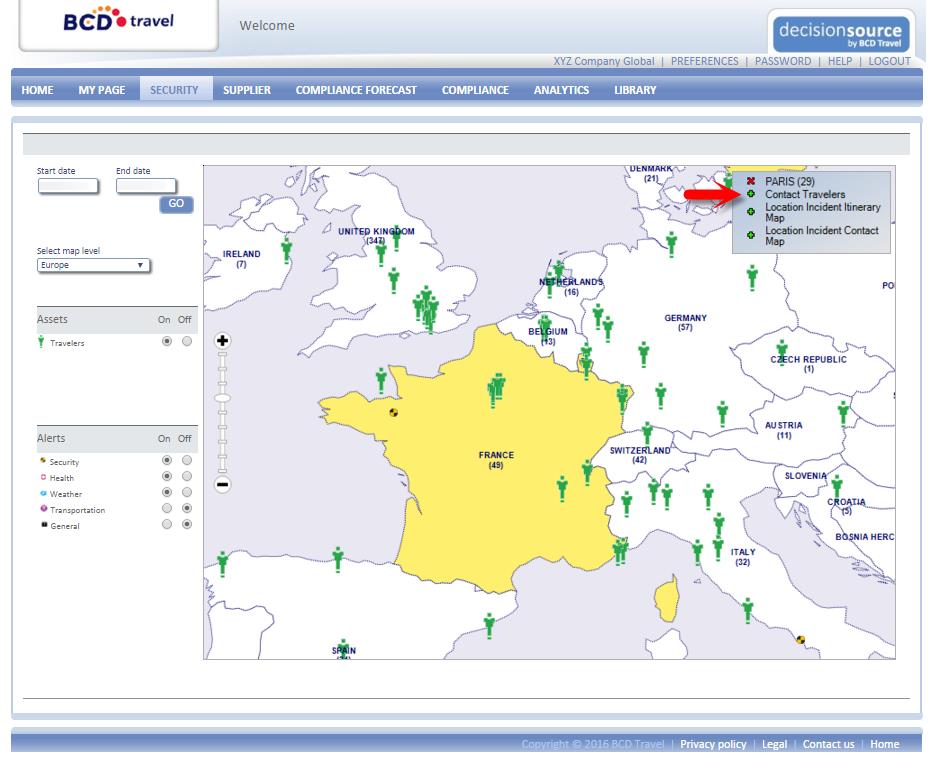Recent terror attacks in Paris and the resulting high levels of alert worldwide have brought a new reality to corporate travel risk management. Threats are not confined to “risky” destinations. Your company has to be ready for risks happening anywhere, and your travelers must play a larger role.
It’s a different way of thinking—and acting—for companies whose solid travel risk management plans and procedures have traditionally put them ahead of the pack. Travel managers and security officers still must identify, assess and mitigate risk before employees travel. But that’s no longer sufficient to fully prepare a company and its travelers for today’s business travel environment.

Now nimbleness is as essential as planning. Corporate travel programs have to be ready to make decisions quickly; communicate with travelers and executives; and act as a situation unfolds.
“We used to look at this in a way that assumed risk could be anticipated by assessing factors like a traveler’s destination, profile and experience—or competence—on the road. But that kind of risk assessment no longer is sufficient on its own,” explained Martin Weisskirchen, vice president of BCD Travel Global Crisis Management. “Situations that were previously considered low risk, such as an experienced traveler going to Paris, now must be considered higher risk. Companies and travelers have to be prepared to react to potentially risky situations in places we’ve traditionally considered safe.”
The word “react” is key, Weisskirchen said. Are you prepared to make quick decisions when reaction time is crucial? Are you prepared to react at any given time on any day of the year? Do you have an efficient method for assessing travelers’ safety and keeping them in communication with your company during a crisis?
Setting expectations with employees has never been more important, Weisskirchen said. Here’s his scenario: Let’s say your booking information indicates 25 travelers are in a city where terrorists have just staged an attack. Your travelers understand their risk-management responsibility and know to check in by calling or sending a text to a designated number. You hear from 23 travelers, so you can focus your resources on locating and verifying the safety of the two who haven’t checked in. You can get help to the travelers who need it with much greater speed and efficiency.
“This is about preparing for reaction to the unexpected in any location, rather than solely assessing risk and then shaping protocols and making decisions based on that assessment,” Weisskirchen said. In this environment, he said, corporate travel programs need to expand travel risk management to include:
- Clearly identifying and empowering decision makers for 24/7/365 readiness.
- Establishing a crisis communication protocol. Who communicates with whom about what, and by which communication channel?
- Training travelers on how to reduce risk in a variety of known scenarios—everything from being mugged (still the most common traveler crisis) to a terrorist attack in a major city.
- Setting duty of care protocols for your company and defining “duty of loyalty” responsibilities for your travelers, i.e., educating employees to actively communicate their condition and whereabouts to the company during a travel crisis.
Of course, being “reactive” to a travel crisis only works if a “proactive” travel risk management plan already is in place. “A company needs to know who will be in charge in a crisis, and someone—but not always the same person—needs to be on call 24/7 and have the authority to put the established travel risk management plan into action,” Weisskirchen said. “Without that foundational travel risk management plan, a company isn’t prepared to manage current travel risks, and certainly isn’t ready to evolve its travel risk management plan as scenarios change.”
With BCD Travel’s DecisionSource, your company can build a travel risk management program that protects your travelers, your reputation and your bottom line. Read Travel Risk Management: Keeping Business Travelers Safe and Secure, then ask your account manager what BCD can do for you.
Manage travel risks with DecisionSource tools


